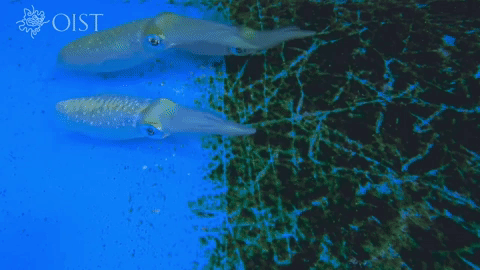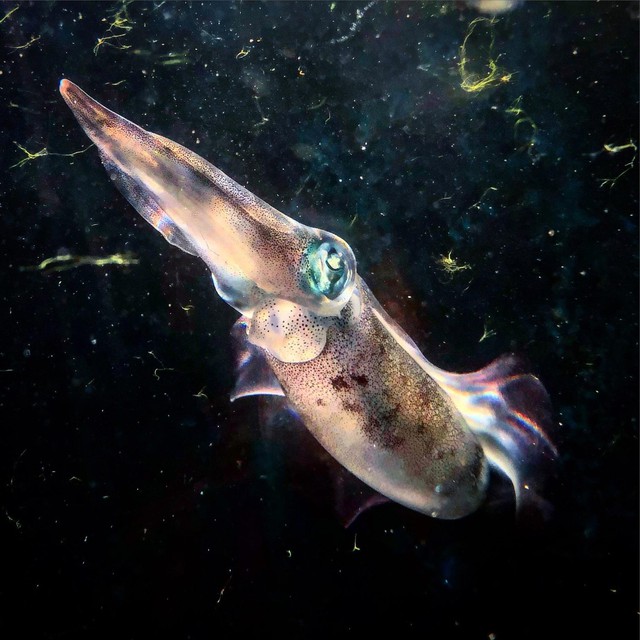While cleaning the tank, researchers accidentally discovered that the squid has the same ability to change color as the octopus
- Tram Ho
When it comes to animals that can camouflage underwater, octopus is the most famous name. By varying their veins and skin color, the octopuses can blend in with the undersea landscape.
The ability to change camouflage color is not well known in squid, but a new study has shown that they can also change color to disappear into their surroundings.

Scientists in Japan were surprised to discover a species of white squid (scientific name Epioteuthis lessoniana sp.2 ) raised in an artificial environment, which can change color depending on the surrounding color.
The researchers discovered their ability by accident while cleaning tanks to remove algae. They found that the squids changed color depending on whether they were swimming in the cleaned part or the part with algae.
After noticing this peculiarity, the researchers performed a control experiment. They kept some squid in the tank and cleaned half of the tank, the other half covered with algae.
Usually, this species is brightly colored to match the bright ocean surface where they normally operate. However, when grown in captivity with algae-infested glass, the squids have the ability to change color according to the background color.
The video they recorded shows the squid having an impressive camouflage ability as they swim from the clean side of the tank to the algae side, their skin instantly changing from light to dark.
The researchers said that this is the first time that squid species change color according to the environment under experimental conditions.
Compared to the camouflage ability of the octopus, the camouflage ability of the squid is much less noticeable. Most of the time, these creatures swim in the ocean, which means they don’t need to change their skin to match the seafloor. Instead, they shimmer or flicker in the sunlight.
However, when swimming in coral reefs or the seabed, these creatures can change to match the background color.
In the wild, for example, Caribbean reef squid ( Sepioteuthis sepioidea ) have been found to change their color to match specific types of coral, even those with complex, multi-patterned patterns. spot.
Meanwhile, the longfin squid ( Doryteuthis pealeii ), which lives on the ocean floor, is nearly transparent so predators can’t see it. Even deep-sea squid, like Onychoteuthis bankii , are thought to be able to switch between transparent and pigmented to camouflage in different waters.
The adult white squid in the study were raised in captivity after the researchers collected eggs from the wild, and they all showed perfect background discoloration.

In two seconds or less, the creatures can change their color to match their surroundings. Furthermore, this color change occurred every time they swam from the clean side to the algae pool and only happened every time they crossed this line.
Ink camouflage is often thought to be based on transparency, but these squids also use pigment cells to adjust their color to match the background.
It’s not yet clear how white squid use this ability in the wild, but the study’s authors note that the same year they conducted these experiments, someone posted to YouTube a video showing the squid gourd. The squid (same species as the squid in the study but a different subclause) camouflaged on coral reefs in Tanzania in a similar way.
Dr. Ryuta Nakajima, one of the study’s authors, said this particular squid species is important to Okinawa for economic and cultural reasons. “It was local fishermen who first distinguished three oval squid species in Okinawa, long before scientists, ” he said.
The authors conclude: “White squid possess a rare combination of transparency and the ability to change body color through chromatophoresis, allowing them to inhabit both marine and coral reef environments. “. This squid is a fascinating creature to study.
Reference: ScienceAlert
Source : Genk
